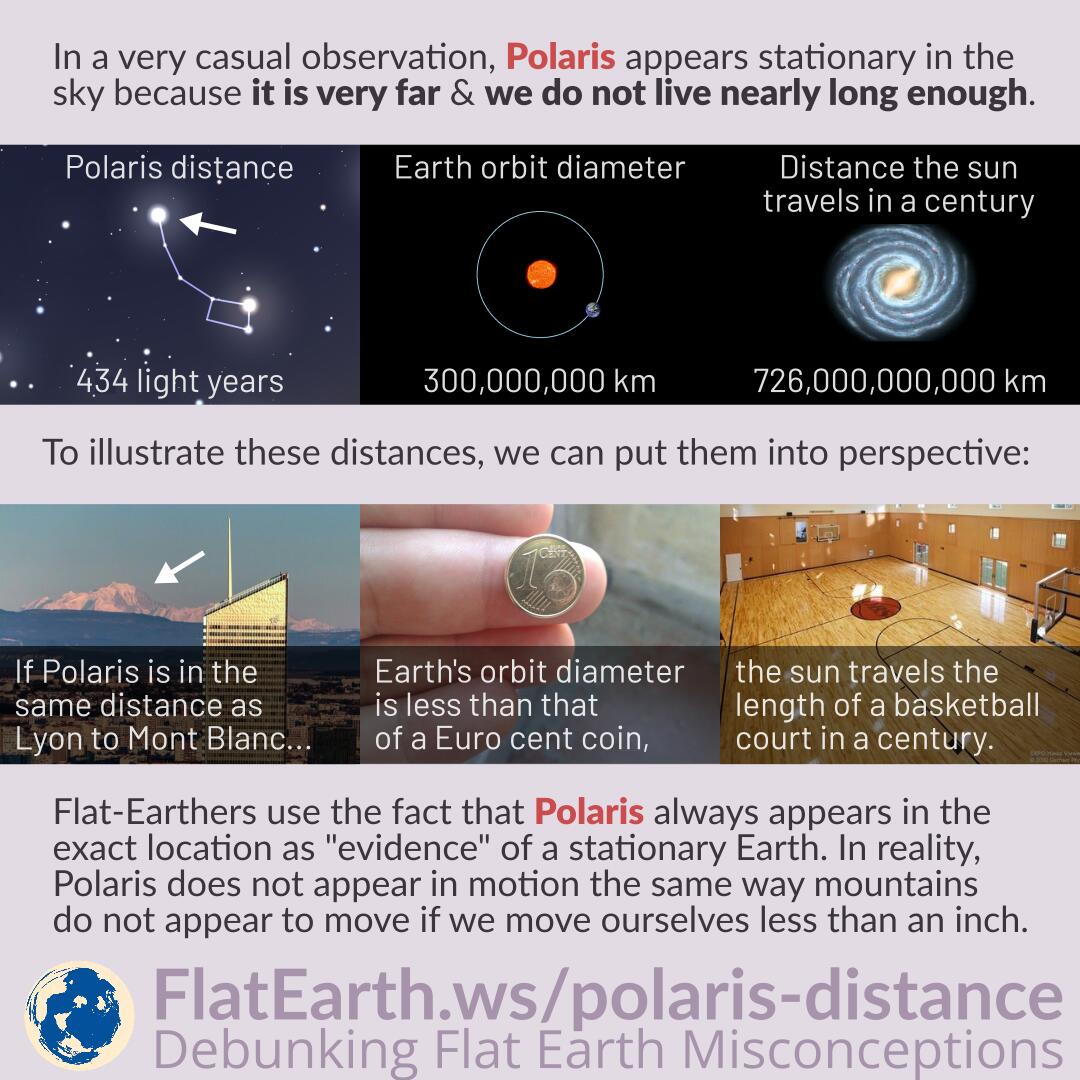In a very casual observation, Polaris appears stationary in the sky because it is very far & we do not live nearly long enough.
Flat-Earthers use that Polaris always appears in the exact location as “evidence” of a stationary Earth. In reality, it does not appear in motion the same way mountains do not appear to move if we move less than an inch.
Polaris is 433.8 light-years away. It is a significant distance compared to the Earth’s orbital diameter, or even the distance the Sun travels through the Milky Way in a century. To illustrate, we can apply the same scale to everyday distances.
The distance from the city of Lyon, France, to Mont Blanc in the Alps is about 160 km (100 miles). If the distance to Polaris is assumed to be the same as the distance from Lyon to Mont Blanc, then using the same scale, Earth’s orbital diameter is less than the diameter of a Euro cent coin. And the distance the Sun travelled in a century is the same as a basketball court’s length.
Polaris appears stationary only because its motion is too small to be observed visually during our lifetime. Precise instruments can detect its apparent movements.
Calculations
- Earth’s orbit diameter = 2 AU = 2.992e+8 km
- Sun’s speed around the galactic center = 230 km/s
- Traveling distance of the Sun in 100 years = 230 km/s × 1 century = 7.25809297 × 1011 km = 4.50996988 × 1011 miles
- Distance from Lyon, France, to Mont Blanc: 160 km or 100 miles.
- If Polaris is at the same distance as Lyon to Mont Blanc, Earth’s orbit diameter is 1.166 cm.
- If Polaris is in the same distance as Lyon to Mont Blanc, the distance the Sun traversed in a century is 28.2964533 meters.
References
- Galactic year – Wikipedia
- Polaris – Wikipedia
- Earth’s orbit – Wikipedia
- Coins of the rupiah – Wikipedia
- Badminton#Court – Wikipedia


